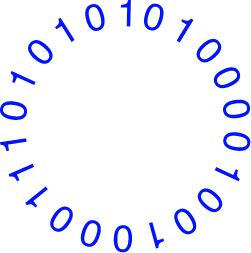To view the original article by Tyler Gallagher, please click here.

Most new product ideas are really product features or options.
Successful apps generate a lot of ideas from customers, sales, and competitors. With a subscription business model, the craft of packaging new ideas into features and options that create stickiness is the most efficient way to scale your business. When you believe you have a great idea for a new type of user, make sure it enhances the application platform value so your existing champions can help you with new stakeholders.
As part of my series about the “5 Things You Need To Know To Create a Successful App or SaaS”, I had the pleasure of interviewing Robin Purohit.
Robin Purohit is the co-founder and CEO of Peritus.ai, the AI recommendation engine for technical support. He has been an entrepreneur throughout his career, building and marketing IT products at both high growth innovators and established industry leaders. Prior to Peritus, he was CEO of Griddable.io, where he led the company to a successful acquisition by Salesforce.com. He was previously a senior executive at BMC and HP Software, where he led multi-billion dollar business units for IT management, application delivery, and security.
Thank you so much for joining us! Our readers would love to “get to know you” a bit better. Can you tell us a bit about your ‘backstory’ and how you got started?
I got into the software industry by accident and very early. In high school, the first PCs were arriving in classrooms and many homes but there were virtually no applications available. As a naturally curious person, I quickly learned how to be a developer. As word got around, I was offered jobs writing applications ranging from payroll to educational games with a side hustle teaching people how to develop their own software. It was an early lesson on how opportunities come with learning new technologies.
What was the “Aha Moment” that led you to think of the idea for your current company? Can you share that story with us?
I’ve spent my career building and marketing IT products, at both high growth innovators and big companies. The biggest thing I have heard from customers throughout my career is “why is it so hard to get an answer to our technical questions on your product?” These complaints got louder as we acquired companies or introduced cutting edge new technologies because of the lag time to get everyone in our technical support and services ecosystem educated on our shiny new object. One day I realized these issues had likely cost my companies billions in lost revenue due to slower than expected market adoption.
Can you tell us a story about the hard times that you faced when you first started your journey? Did you ever consider giving up? Where did you get the drive to continue even though things were so hard?
Similar to every company, the sudden impact of COVID-19 was like a meteor strike. Having led large software portfolios through the extreme crises of the dot.com collapse and 2008 financial meltdown, I was prepared to do the hard things really fast to ensure survival during an uncertain period. But I also knew how critical it was to reposition the business to thrive in a very different new world. In this case, we rapidly embraced the shift to online collaboration for technical support. In a startup, the odds of failure are high so you’re always in crisis mode, but as long as you have cash and a fired-up team, you can find the motivation to keep going.
So, how are things going today? How did your grit and resilience lead to your eventual success?
We are entering 2021 very well positioned. We did this by doubling down on our biggest customers and pivoting our new customer acquisition model from enterprise sales to a bottoms-up trial model. This is very important. As the AI-based application market matures, it is favoring approaches that deliver an ROI in year one rather than long term promises and onerous consulting projects.
Can you share a story about the funniest mistake you made when you were first starting? Can you tell us what lessons or ‘take aways’ you learned from that?
My first startup was a first-generation storage networking technology. We sold that company to HP, and after the acquisition, we really struggled to get customer traction. While I got discouraged and moved onto new horizons, our founding team started Brocade which became a huge success. It was a humbling lesson on the importance of market timing — in new markets you are often way too early but need to be ready when things crystallize.
What do you think makes your company stand out? Can you share a story?
Most customer service AI startups focus on eliminating low-cost front-line labor for high volume conversations. Our view is that technical people want help from other people they trust, so we focus on helping experts answer questions that boost their personal reputation. We learned this the hard way during a pilot installation when the customer didn’t move our bot into production even though it outperformed humans. We forgot that customer service is about people connecting to each other, not just IQ.
Which tips would you recommend to your colleagues in your industry to help them to thrive and not “burn out”?
First, being a leader in a crisis means giving a lot of yourself to your team, customers and investors, and always being available. It’s important to remember to have a sense of fun even in the toughest times. If you show you can do that, people will respond in kind — and it’s a great endorphin rush. Secondly, find something outside of work that provides creative renewal. It’s different for everyone, but for me, I’ve been playing lots of guitar and trying to learn a new song every week. It’s an easy thing to do while social distancing!
None of us are able to achieve success without some help along the way. Is there a particular person who you are grateful towards who helped get you to where you are? Can you share a story?
I have been very fortunate to work for many awesome software CEOs. I’d like to give a shout out to Mark Leslie, CEO of VERITAS and more recently a legendary investor/board member. I joined VERITAS as an eager young product manager. He gave me and a lot of other ambitious young people the space to contribute and just kept throwing new challenges at us to see how far we could go. That experience trained me to always seek out and empower high potential young talent who believe they can do anything.
Ok thank you for all that. Now let’s shift to the main focus of this interview. Approximately how many users or subscribers does your app or software currently have? Can you share with our readers three of the main steps you’ve taken to build such a large community?
<We aren’t currently sharing user subscriber data>.
First, we are building a user community with a free AI Assistant to help answer technical questions on community forums like Stack Overflow. With over 125 million active users a month, Stack Overflow is a rich target user community. Second, we emphasize pre-training on our AI application so there is out-of-the-box-value. And lastly, we constantly work to remove any friction in the signup process and use of our free product. Everything needs to be obvious.
What is your monetization model? How do you monetize your community of users? Have you considered other monetization options? Why did you not use those?
We sell paid subscriptions to Support or Forum Managers that includes unlimited users for our AI Assistant and a SaaS application to drive case deflection and customer success initiatives with a clear ROI.
We are evaluating user-based monetization models, but for now, we’ve decided that viral adoption by a growing community of users is more important. By staying close to how people use our products, we’ll determine when and how to introduce premium features without limiting growth.
Based on your experience and success, what are the five most important things one should know in order to create a very successful app or a SaaS? Please share a story or an example for each.
- Obsess about removing friction from the initial sale.
AI applications need data, but getting confidential access to data takes time to get security clearances. We focus on creating initial value using only publicly available data to eliminate this step. - Attack the market that legacy vendors are ignoring.
A key learning from Innovator’s Dilemma is big vendors listen too much to their existing customers and users. That means they miss the new need and the new buyer. I saw this in the early days of the application performance management (APM) market, where we sold to application teams in the business unit, not central IT. That caught the legacy “big four” of IT management by surprise. - Make sure your demo is a leave-behind trial.
No one buys your product because of a great PowerPoint! Your product needs to be the star of a sales call, it should be personalized to each customer, and it can’t be fake. I can’t tell you how many products I’ve seen stumble because while the demo was great, it was really a UX prototype. The best demo meetings close with a trial offer with a follow-up in 30 days. - KISS principle for pricing.
Pricing complexity is the death of growth. Keep the focus on the one or two possible metrics that have a clear link to business value and can be communicated up the management chain. That helps your champions secure larger budget and user adoption. - Most new product ideas are really product features or options.
Successful apps generate a lot of ideas from customers, sales, and competitors. With a subscription business model, the craft of packaging new ideas into features and options that create stickiness is the most efficient way to scale your business. When you believe you have a great idea for a new type of user, make sure it enhances the application platform value so your existing champions can help you with new stakeholders.
You are a person of great influence. If you could start a movement that would bring the most amount of good to the most amount of people, what would that be? You never know what your idea can trigger. 🙂
“Let’s declare the first Saturday of every month a global Digital Detox Day — except for emergency services. The extra mental space could unleash a lot of creativity to tackle the really big issues of our time! Maybe we’ll even read more books.”
How can our readers follow you on social media?
Peritus is on twitter @peritus.ai and linkedin.com/company/peritus.ai/.
I am at @robinpurohit and linkedin.com/in/robinpurohit
This was very inspiring. Thank you so much for joining us!
